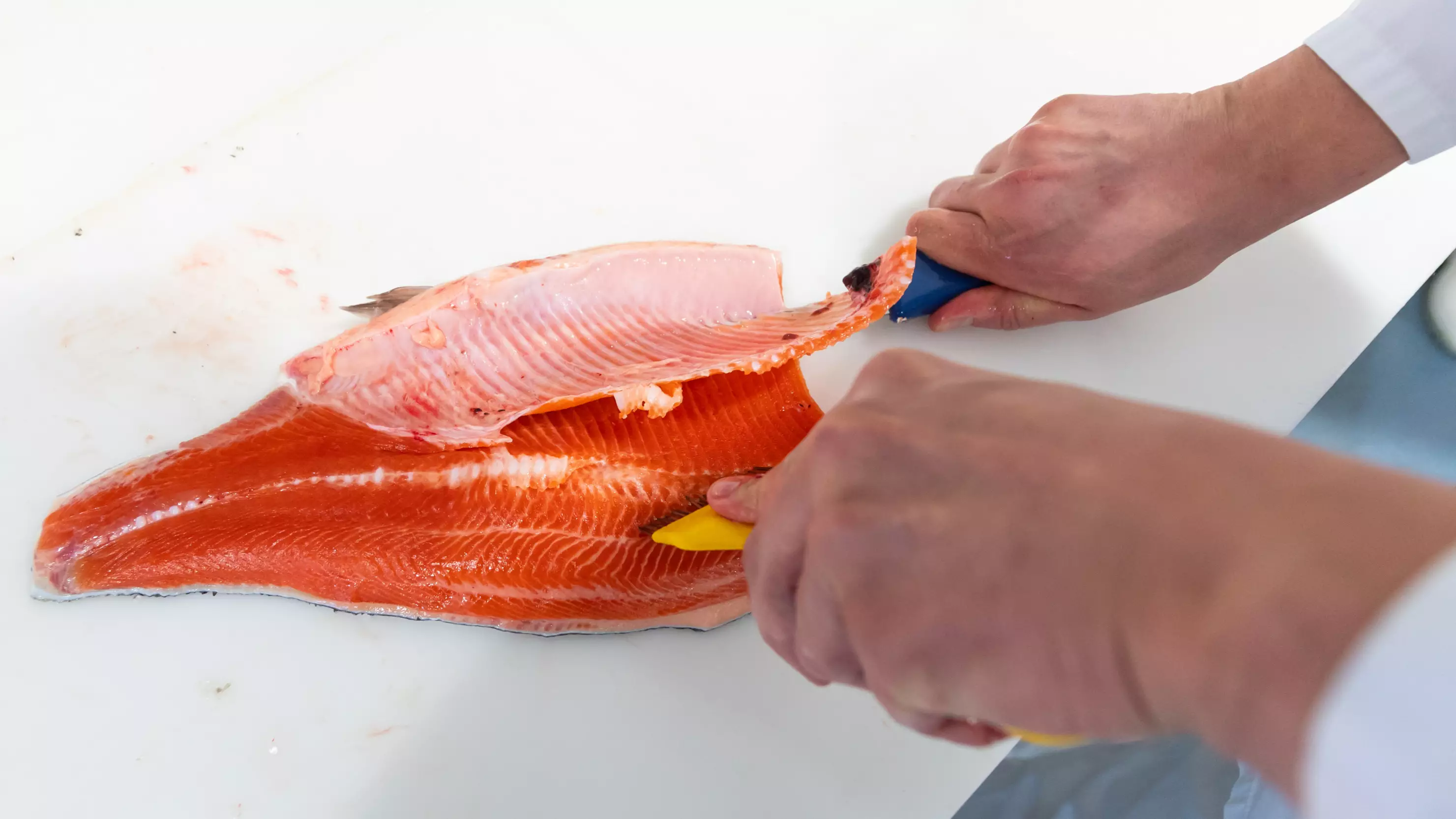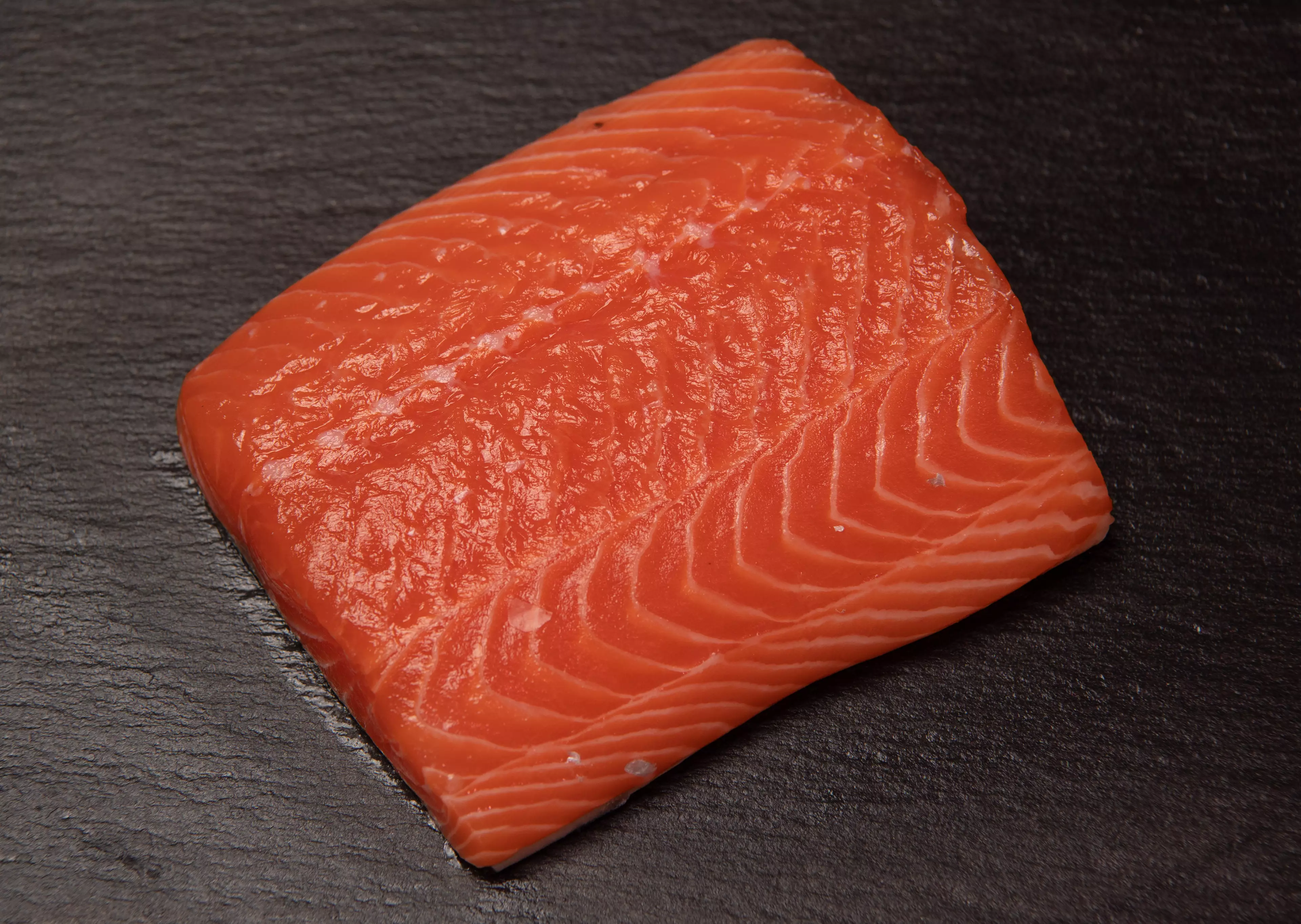
As we all know, one of the distinctive qualities of salmon is its... well, salmon-coloured meat. But you may not know how your salmon got that colour.
Basically, it's all thanks to a chemical that's fed to them.
Of course, you are what you eat, and wild salmon eat shrimp and krill, which contain chemical compounds called carotenoids.
Advert
One of the chemicals in this compound is astaxanthin, which gives salmon that distinctive reddish-pink colour.

However, without the likes of shrimp and krill in their diet, farmed salmon would actually have white meat. To prevent this, farmers add carotenoids to their food.
You may wonder why, given that we eat white fish all the time.
Advert
Don Read - who runs West Creek Aquaculture fish farm in British Columbia, Canada - told TIME in 2017: "If we didn't do it, customers wouldn't buy it.
"Consumers buy what they're familiar with. Consumers buy what they are comfortable with. They won't go into the store to buy white salmon."
Paul Greenberg, author of Four Fish and American Catch, said pink salmon sells better because it harks back to the pre-mass farming era, when salmon used to be known as the 'fish of the rich'.
He told TIME: "Salmon is the most popular fish in America in part because of the colour.
Advert
"It's exotic, it stands out. When you think about it, most fish you see in the market are going to have some variant on white, grey or beige. The red of salmon just pops."
But as well as adding colour, astaxanthin is essential in keeping farmed salmon healthy, according to Mike Mitchell of fish farming company Clean Fish.

He told FishFarmingExpert: "In addition to the red-orange pigmentation, astaxanthin provides vital health benefits to salmon.
Advert
"Astaxanthin has 100-500 times the anti-oxidant capacity of vitamin E and prevents peroxidation or degradation of fat cells, which is crucial in protecting cold-water species like salmon.
"Astaxanthin also helps with fertilisation, cellular respiration and immune system functions. Because of its strong antioxidant properties, astaxanthin is commonly used as a nutritional supplement for humans."
He added: "So next time you hear someone disparaging farmed salmon as dyed, remember that colour-added should really be 'health-supplement added'.
"Astaxanthin is added to salmon feed to replicate the krill that wild salmon eat, not specifically to add colour to the fish. Salmon need astaxanthin to be healthy, and so do you."
Featured Image Credit: PATopics: Food, Fish, Interesting, Animals